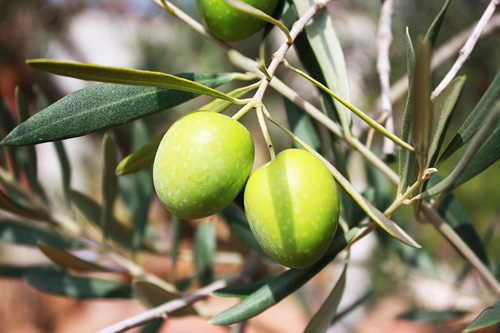
Olive oil is an edible oil extracted from olives, or the fruits of the olive tree (Olea europaea). In the virgin type it is obtained from the mechanical pressing of the olives. Other product types of oil derived from olives, but with different dietary and organoleptic properties, are obtained by rectification of virgin oils and by solvent extraction from olive pomace. It is characterized by a high content of monounsaturated fats. The production of the most important olive oil is based on exclusively mechanical extraction processes. In this way, virgin oils are distinguished from a commodity point of view from those obtained through processes based on physical and chemical methods (seed oils, rectified and refined olive oils, pomace oils). there are two methods of extraction: the classical one and the modern one Other techniques involve the use of physical and chemical methods. However, it must be said that the rules and quality standards establish that an olive oil can be defined as virgin if only mechanical methods have been used for its production. The oil obtained with the use of chemical and physico-chemical methods is therefore identified with different product types and distinct from virgin. The processing lines in mechanical extraction differ in the methods used in the individual phases, therefore there are different types of systems. In addition to the technical characteristics, the plants differ markedly for the work capacity, the level of mechanization, the organization of work, the qualitative and quantitative yield, the production costs. In general, the production line of an oil mill includes five fundamental phases: preliminary operations; milling; extraction of the oil must; separation of oil from water; storage, clarification and bottling. In general, the yield of the olives can have considerable variations, from a minimum of about 8-9 kg of extra virgin oil per 100 kg of pressed olives up to a maximum of 22-28 kg of extra virgin oil per 100 kg of olives. The variations are attributable to various factors: the exposure of the olive trees to the sun, the water availability in the vegetative period and during the growth of the olives, the time of harvest.
| FEATURES | Standard |
|---|---|
| Acidity (%) | 0,7 max |
| Serial No.(meq02/kg.) (*) | 12.5 max |
| Panel test | Yellow / green color, with a fruity olive flavor with hints of green and spicy |
| Median defects =0 | |
| Fruity median >0 | |
| COMP.ACIDICA | |
| C14_0 | 0,05 max |
| C18_3 | 0,9 max |
| C20_0 | 0,6 max |
| C20_1 | 0,4 max |
| C22_0 | 0,2 max |
| C24_0 | 0,2 max |
| t-C18_1 | 0,05 max |
| t-C18_2+C18_3 | 0,05 max |
| STEROLIC FRACTION | |
| Cholesterol | 0,5 max |
| Brasicasterol | 0,1 max |
| Campesterol | 3.5 max |
| Stigmasterol | 1.2 max |
| B-Sitosterol | 93,5 min |
| D7-Stigmastenol | 0,4 max |
| Eritrodiol + Uvaol | 3,5 max |
| Steroli totali (ppm) | 1000 min |
| SPECTROPHOTOMETRY UV (*) | |
| K232 | 2,15 max |
| K270 | 0,14 max |
| Delta K | 0,000 max |
| For the analyzes not reported, reference is made to Reg. CE 2568/91 and subsequent amendments |


